What are flat feet and their impact on your running
Flat feet, also known as fallen arches or pes planus, is a common condition where the arches of the feet are significantly lower or absent. This causes the entire sole of the foot to come into contact with the ground. This lack of arch support can have a notable impact on running and athletic performance.
When running, the arches of the feet act as natural shock absorbers, distributing the impact forces evenly and helping maintain stability. However, individuals with flat feet often experience overpronation, where the foot rolls excessively inward during the gait cycle. This overpronation can lead to biomechanical imbalances, placing added stress on the ankles, knees, and hips, and increasing the risk of injuries such as shin splints, plantar fasciitis, and knee pain.
Therefore, it becomes crucial for individuals with flat feet to select running shoes that provide appropriate support, stability, and cushioning to mitigate the impact of overpronation and enhance their running experience. Choosing the right running shoes tailored to flat feet can alleviate discomfort, enhance foot alignment, and minimize the risk of injuries, allowing runners to enjoy their activity with greater comfort and performance.
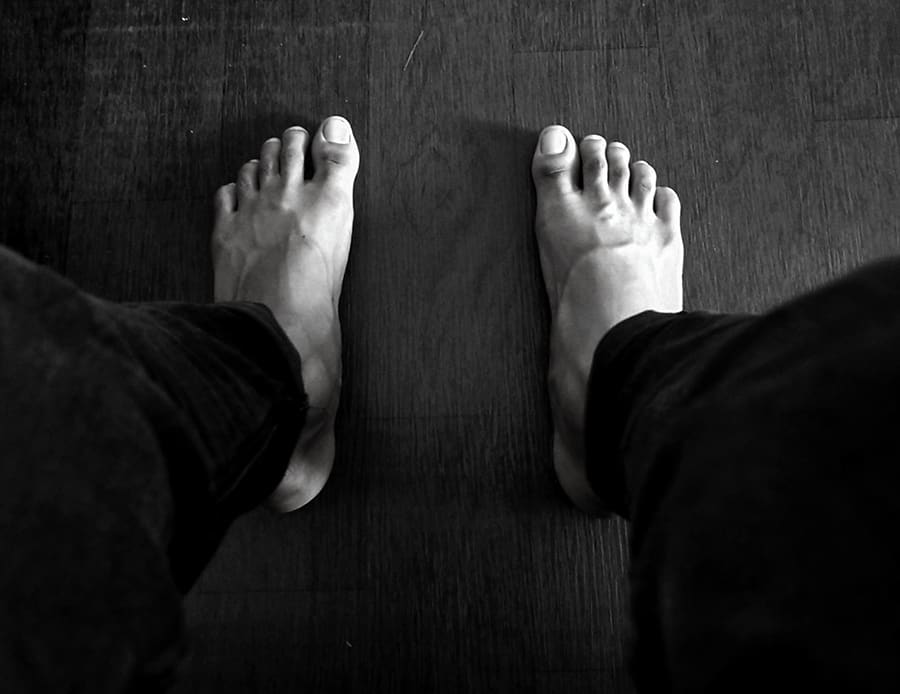
What causes of flat feet
Flat feet, or fallen arches, can be caused by various factors. Here are some common causes of flat feet:
- Genetics: One of the primary causes of flat feet is genetics. Some individuals are born with a genetic predisposition to have flatter arches. If flat feet run in your family, there’s a higher likelihood that you may develop the condition.
- Weak Arch Development: In some cases, the arches of the feet may fail to develop fully during childhood. This can result in flat feet that persist into adulthood.
- Foot and Ankle Injuries: Trauma or injuries to the foot or ankle can damage the tendons and ligaments that support the arches, leading to a collapse of the arch and the development of flat feet.
- Tendon or Muscle Abnormalities: Certain conditions, such as posterior tibial tendon dysfunction, can cause the supporting tendons and muscles in the foot to weaken or become damaged. This can result in the arches gradually flattening over time.
- Aging: As we age, the structures in our feet can weaken, including the tendons and ligaments that support the arches. This can lead to the development of flat feet later in life.
- Obesity: Excessive body weight places added stress on the feet and can contribute to the development of flat feet. The excess weight can cause the arches to collapse or flatten due to the increased pressure.
- Medical Conditions: Certain medical conditions, such as rheumatoid arthritis, diabetes, and conditions affecting the nervous system, can impact the structure and function of the feet, leading to flat feet.

It’s worth noting that some individuals with flat feet may not experience any symptoms or problems, while others may have discomfort, pain, or gait abnormalities. If flat feet are causing significant issues or interfering with daily activities, please consult with a healthcare professional or a podiatrist for a proper diagnosis and appropriate treatment options.
Common symptoms and challenges faced by runners with flat feet
Runners with flat feet often encounter specific symptoms and challenges that can affect their running performance and overall foot health. Here are some common symptoms and challenges faced by runners with flat feet:
- Overpronation: Flat feet are often associated with overpronation, where the feet roll excessively inward during the running gait. This can lead to biomechanical imbalances and instability, increasing the risk of injuries and impacting running efficiency.
- Foot and Lower Leg Pain: Flat feet can cause pain and discomfort in various areas of the foot and lower leg. This may include arch pain, heel pain (plantar fasciitis), shin splints, Achilles tendonitis, or generalized foot fatigue. The lack of arch support and abnormal foot alignment contribute to these symptoms.
- Decreased Shock Absorption: The natural arches of the feet act as shock absorbers, cushioning the impact of each step. Flat feet have reduced shock absorption capacity, leading to increased stress on the feet, ankles, and lower extremities during running.
- Lack of Foot Stability: Flat feet can result in reduced stability and balance while running. The absence of arches compromises the foot’s ability to distribute weight evenly, leading to instability and a higher risk of ankle sprains or other foot-related injuries.
- Increased Strain on Joints: The altered foot mechanics associated with flat feet can lead to increased strain on the joints of the lower body, including the ankles, knees, and hips. This can contribute to discomfort, pain, and a higher risk of developing joint-related issues.
- Reduced Running Efficiency: Due to the challenges posed by overpronation and decreased shock absorption, runners with flat feet may experience reduced running efficiency. Their gait may be compromised, leading to a less efficient transfer of energy and a higher energy expenditure.
- Shoe Fit Issues: Flat feet can make it challenging to find properly fitting running shoes. The lack of arch support may cause discomfort or pressure points in certain areas of the foot, requiring runners to seek shoes specifically designed to accommodate flat feet.
It’s important for runners with flat feet to address these symptoms and challenges appropriately. This includes selecting running shoes that provide adequate support and cushioning, incorporating strengthening exercises and stretches into their routine, and consulting with healthcare professionals or podiatrists for personalized guidance and potential orthotic interventions.
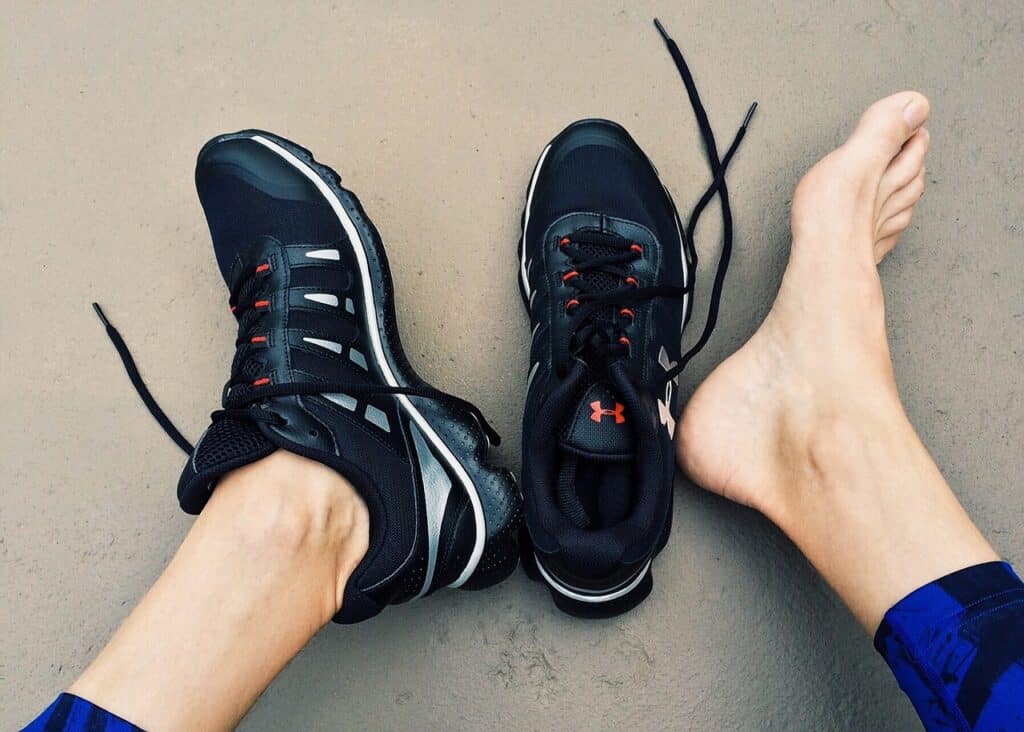
Importance of choosing the right running shoes for flat feet
When it comes to running with flat feet, the significance of selecting the right running shoes cannot be overstated. Here are several key reasons why choosing appropriate footwear is crucial for individuals with flat feet:
- Enhanced Support and Stability: Running shoes designed specifically for flat feet offer enhanced arch support and stability features. These shoes provide a structured midsole and supportive materials that help maintain proper foot alignment, reducing overpronation and minimizing the risk of injuries caused by excessive inward rolling of the feet.
- Improved Shock Absorption: Flat feet tend to have a reduced natural shock-absorbing capacity. The right running shoes for flat feet incorporate advanced cushioning technologies, such as gel or foam, which absorb and distribute impact forces evenly throughout the foot. This feature helps reduce stress on the feet, ankles, and joints, making the running experience more comfortable and less likely to lead to pain or injury.
- Optimal Foot Alignment: The right running shoes can assist in aligning the foot and ankle properly during the running motion. By providing appropriate arch support and stability features, these shoes can help correct or compensate for the lack of natural arches in flat feet. This alignment promotes a more efficient running gait and reduces the strain on various parts of the lower body, including the knees, shins, and hips.
- Injury Prevention: Flat feet are associated with an increased risk of various running-related injuries. By choosing running shoes specifically designed for flat feet, individuals can minimize the risk of conditions like plantar fasciitis, shin splints, Achilles tendonitis, and stress fractures. The shoes’ supportive features help mitigate the biomechanical issues caused by flat feet, reducing the strain and impact on vulnerable areas of the feet and legs.
- Enhanced Comfort and Performance: Running with the right shoes that accommodate flat feet can greatly enhance comfort and overall performance. Shoes that provide the necessary support and cushioning can alleviate discomfort, reduce fatigue, and improve running efficiency. When runners feel more comfortable and supported, they can focus on their performance, stride, and endurance, ultimately maximizing their running potential.
In summary, choosing the right running shoes tailored to flat feet is crucial for individuals with this condition. These shoes offer the necessary support, stability, and cushioning to mitigate overpronation, promote proper foot alignment, prevent injuries, and enhance overall comfort and running performance. By investing in suitable footwear, individuals with flat feet can enjoy running with reduced discomfort and a lower risk of running-related issues.
CLICK HERE for our guide to the Best Running Shoes For Flat Feet
Key Considerations for Running Shoes for Flat Feet
When choosing running shoes for flat feet, several key considerations should be kept in mind to ensure proper support, stability, and comfort. Here are important factors to consider:
- Arch Support: Look for running shoes with built-in arch support specifically designed for flat feet. The shoes should provide adequate support to help maintain proper foot alignment and minimize overpronation.
- Motion Control and Stability Features: Opt for shoes that offer motion control and stability features to address overpronation. These features typically include firmer materials or technologies in the midsole and outsole that help stabilize the foot and prevent excessive inward rolling.
- Cushioning: Choose running shoes that provide ample cushioning to absorb impact and reduce stress on the feet and lower limbs. Look for shoes with cushioning technologies such as gel, foam, or air units that offer effective shock absorption.
- Firm Heel Counter: A firm heel counter provides stability and helps keep the foot in alignment. It prevents excessive rolling and promotes proper foot strike during running. Make sure the shoe’s heel counter is sturdy and well-constructed.
- Flexibility: While stability is essential, the shoes should still offer some flexibility to allow for natural foot movement during running. Look for shoes that bend and flex at the forefoot area rather than in the middle or arch region.
- Roomy Toe Box: Ensure the shoes have a roomy toe box that allows the toes to splay naturally. This provides comfort and prevents excessive pressure on the toes, especially during longer runs.
- Proper Sizing and Fit: Always try on running shoes and ensure they fit properly. Sizes may vary among brands, so don’t rely solely on your usual size. Ensure there is enough space for the toes to move and that the shoes securely hold your feet without being too tight or too loose.
- Pronation Evaluation: If possible, have a gait analysis done by a professional to determine your specific degree of overpronation and foot mechanics. This can help guide you in selecting the most suitable running shoes for your individual needs.
Remember, what works for one person with flat feet may not work for another, so it’s essential to try on different brands and models to find the best fit and support for your specific foot structure and running style. Consulting with a specialist or knowledgeable salesperson at a reputable running store can also provide valuable guidance in selecting the right running shoes for flat feet.
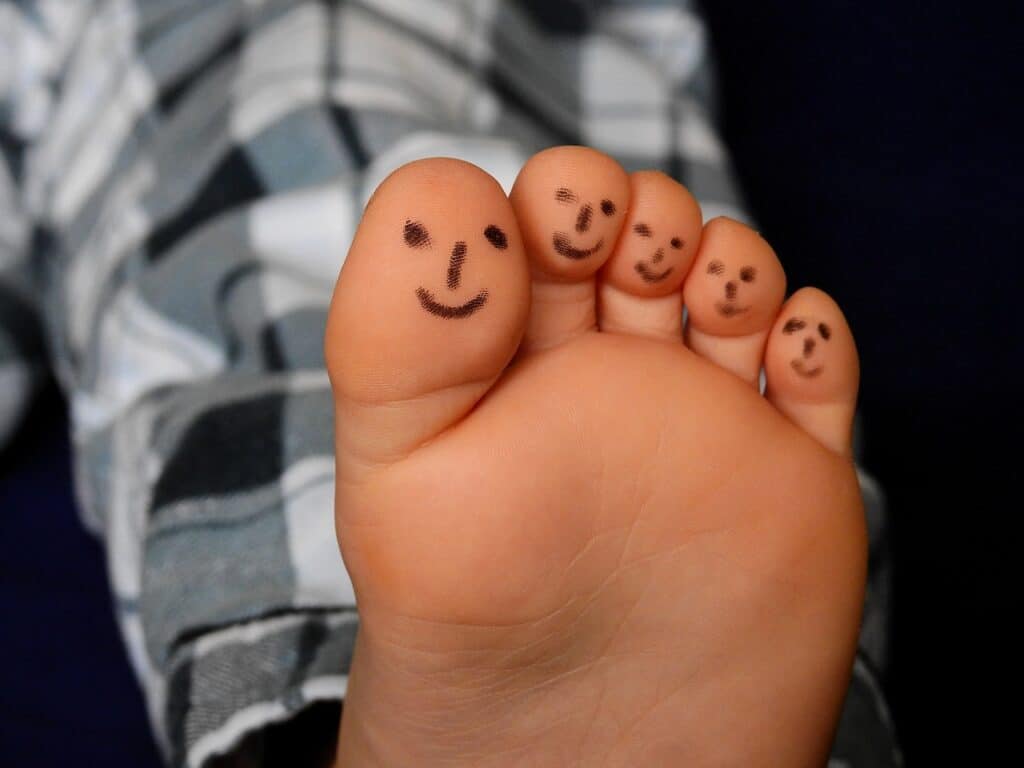
Best Practices For Runners with Flat Feet
In addition to choosing the right running shoes for flat feet, implementing certain practices and exercises can help flat-footed runners improve their running form, strengthen their feet, and reduce the risk of injuries. Here are some helpful tips:
- Focus on Running Form: Pay attention to your running form and technique. Maintain an upright posture, engage your core muscles, and avoid excessive inward rolling of the feet (overpronation). Land on your midfoot or forefoot rather than your heels to promote a more efficient stride.
- Strengthening Exercises: Incorporate specific exercises to strengthen the muscles that support the arches of your feet. This can include toe curls, calf raises, arch lifts, and towel scrunches. These exercises can help improve foot stability and enhance the arch’s strength over time.
- Stretching and Mobility Work: Perform regular stretching exercises to improve flexibility in your calves, Achilles tendons, and plantar fascia. Adequate flexibility can reduce tension and stress on the arches. Consider incorporating exercises like calf stretches, ankle rotations, and toe stretches into your routine.
- Gradual Training Progression: Increase your running mileage and intensity gradually to allow your feet and legs to adapt and strengthen over time. Sudden increases in distance or intensity can place excessive strain on your feet and increase the risk of injuries.
- Orthotics or Custom Insoles: Consider using orthotics or custom insoles prescribed by a podiatrist or healthcare professional. These devices can provide additional support, cushioning, and stability tailored to your specific foot structure and needs.
- Cross-Training: Incorporate cross-training activities into your routine to reduce the repetitive stress on your feet. Activities like swimming, cycling, or strength training can help maintain cardiovascular fitness while giving your feet a break from constant impact.
- Listen to Your Body: Pay attention to any discomfort, pain, or unusual sensations in your feet or lower limbs. If you experience persistent pain or symptoms, reduce your running intensity, and consider seeking guidance from a healthcare professional or podiatrist.
- Regular Foot Care: Practice good foot hygiene and care to maintain optimal foot health. Keep your feet clean and dry, wear moisture-wicking socks, and choose shoes with breathable materials to prevent fungal infections or blisters.

Remember, every individual is unique, and what works for one flat-footed runner may not work for another. It’s essential to listen to your body, seek professional advice when needed, and make adjustments to your training and footwear as necessary. With proper attention to form, strength, and support, flat-footed runners can enjoy running with reduced discomfort and improved performance.
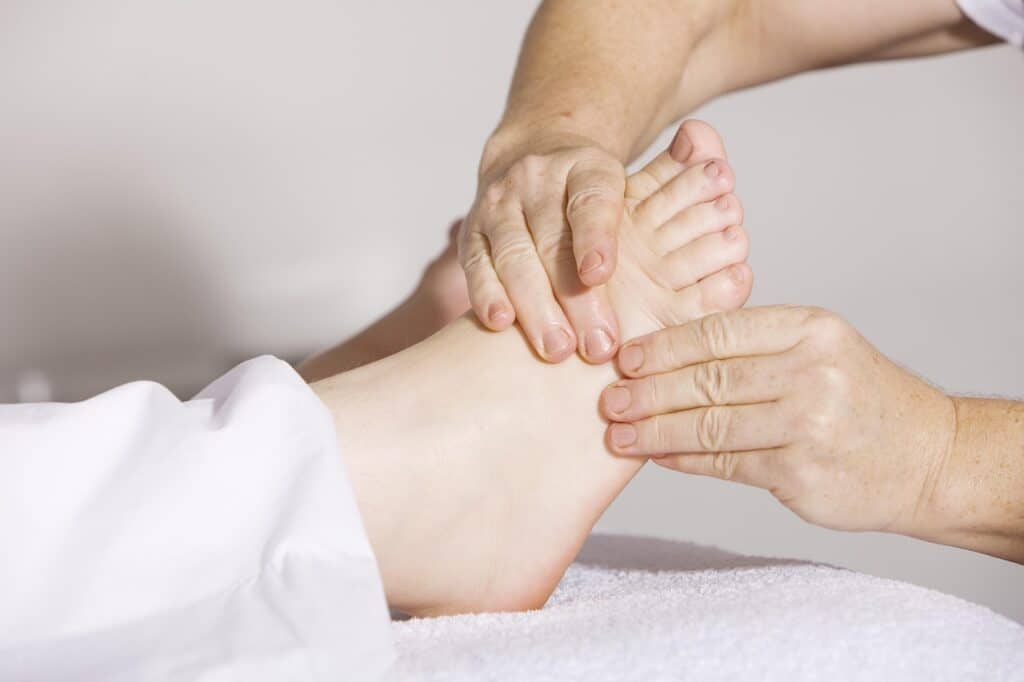
Conclusion
Choosing the right running shoes for flat feet is of paramount importance for runners with this condition. Flat feet can lead to overpronation, decreased shock absorption, and increased risk of injuries. However, by considering key factors such as arch support, stability features, cushioning, and proper fit, flat-footed runners can find shoes that address these challenges and improve their running experience.
Additionally, implementing tips such as focusing on running form, performing strengthening exercises, incorporating stretching and mobility work, and gradually progressing training can further enhance foot stability, strength, and overall performance. Using orthotics or custom insoles, cross-training, and listening to your body are also valuable practices for flat-footed runners.
Ultimately, the goal is to reduce discomfort, prevent injuries, and optimize running efficiency. It is advisable to consult with healthcare professionals, such as podiatrists or sports medicine specialists, for personalized guidance and recommendations tailored to your specific needs.
By prioritizing the right running shoes and following these additional tips, flat-footed runners can overcome challenges, enjoy their running endeavors with greater comfort and confidence, and pave the way for improved foot health and performance.

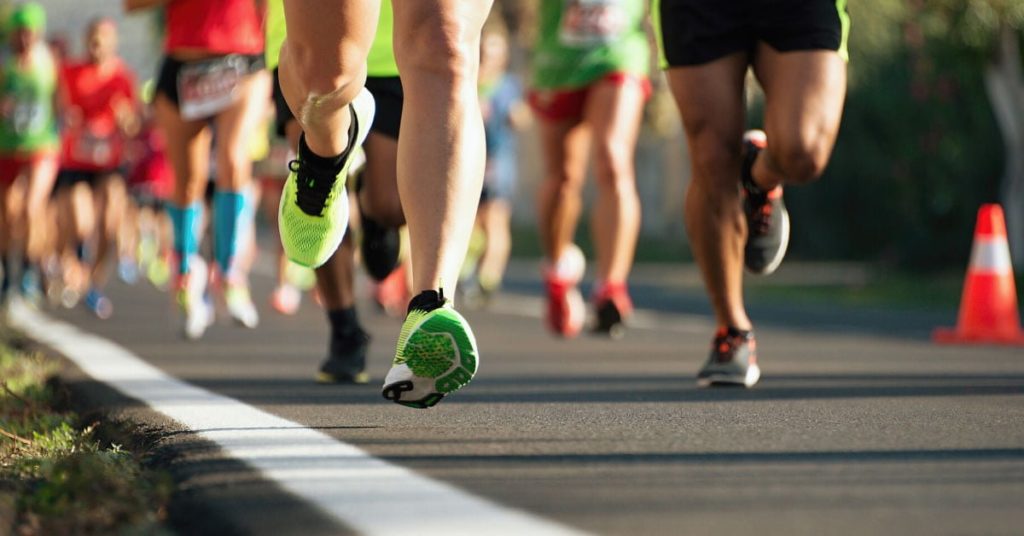
Pingback: 5 Best Running Shoes for flat feet - Run Eat Train